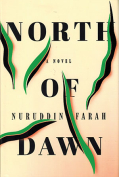Amma’s Daughters: A Memoir by Meenal Shrivastava
 Edmonton, Alberta. AU Press. 2018. 312 pages
Edmonton, Alberta. AU Press. 2018. 312 pages
It is significant that Meenal Shrivastava’s memoir of Amma, her maternal grandmother, is titled Amma’s Daughters. I emphasize the plural “daughters” because this memoir is a great example of relational storytelling. While the figure of the anticolonial Indian activist, Amma, takes center stage in the narrative, the telling of the tale is refracted through the perspective of Shrivastava’s mother, Surekha Sinha, herself a writer of “eight books” and “more than a thousand pieces of verse.” Yet Amma’s Daughters is also the book Surekha Sinha never wrote. The responsibility for writing that book fell to Surekha Sinha’s daughter, the academic Meenal Shrivastava.
Drawing on her grandmother’s autobiography, Smriti ki Shrinkhalayen (Chain of Memories, published during the Sino-Indian war of 1962), Amma’s sole surviving diary, conversations with family members and people associated with Amma, and rigorous archival work, Shrivastava crafts a memoir that is both engagingly imaginative and archival. The problem, as she puts it, is that we “experience our lives not as a coherent story but as a series of moments.” Trying to “imagine the world” through her mother’s eyes becomes Shrivastava’s way of endowing narrative shape to Amma’s momentous life. Relationality—between women, between generations—is, thus, the crucial cog that structures this narrative. Gaps, of course, remain—about her grandmother’s early life, about the opaque political past of her larger-than-life albeit reticent grandfather, Babu. But the memoir successively reveals unknown facets of their lives through the medium of the reportage of oral narration (between Amma and Surekha Sinha, primarily) and imaginative witnessing on Shrivastava’s part. Such forms of imaginative witnessing connect Shrivastava to what predates her emergence as a subject endowed with knowledge. Her sense of who she is emerges through prior acts of storytelling by others.
At the same time, Amma’s Daughters paints a broader canvas than just a family history—another reason for which I emphasize the pluralized form of “daughters.” Viewed from another angle, Amma’s life history is also a gift to future generations of women and men in India besides being a tribute to “ordinary women who were quietly extraordinary” and played a major, although largely undocumented, role in the anticolonial movement. This is emphasized in a key moment during the middle of the book where Kamala mausi (aunt), a fictional composite of women that Shrivastava read about or had the privilege to interview, counters Babu’s statement that if a story is good, it does not need the help of others to circulate. Kamala mausi retorts:
“In a perfect world that may be true. But in a man’s world, women have no opportunity to tell their stories.” She argues at length about the need to collect and preserve these stories, to show that history is more a complex patchwork tapestry than a neat series of actions. Ordinary men and women needed constant reminders of their stake in political change.
Collection and preservation of these “ordinary” stories then is not simply a personal act at tracing a family genealogy but one that slowly reveals the “complex patchwork tapestry” of history. No surprise then that this wonderful book found a home in a book series published by AU Press entitled Our Lives: Diary, Memoir, and Letters—a series that by “foregrounding the experience of ordinary individuals” aims to “demonstrate that history is ultimately the story of our lives.”
Amit R. Baishya
University of Oklahoma










































